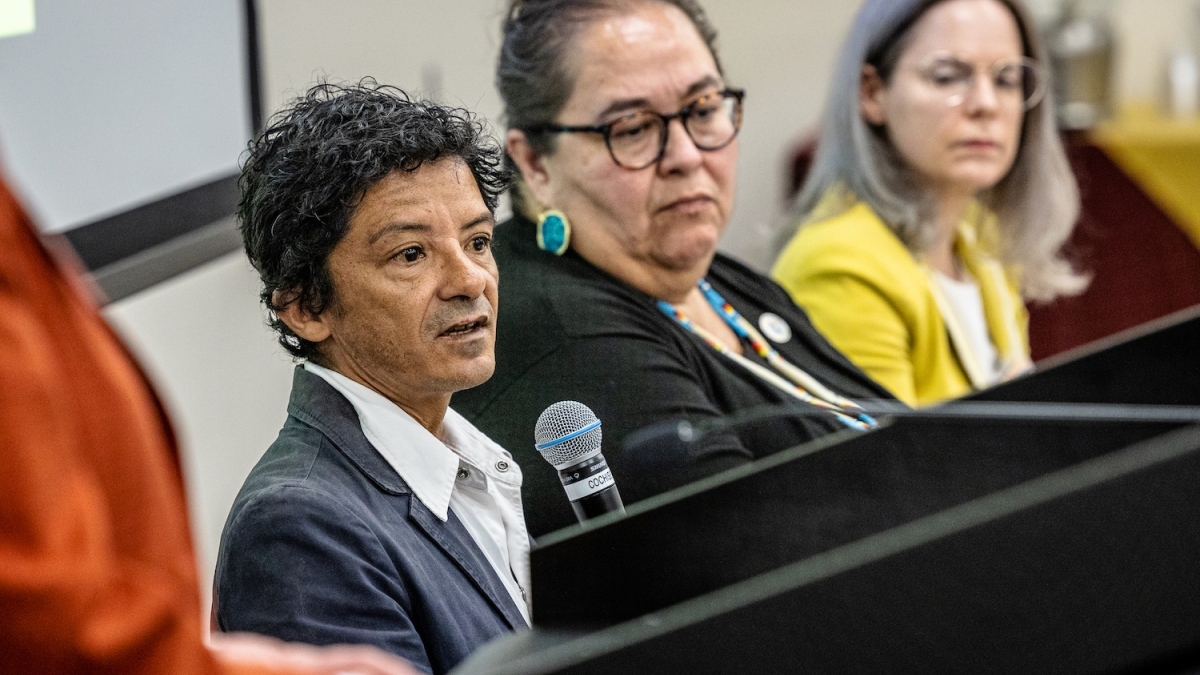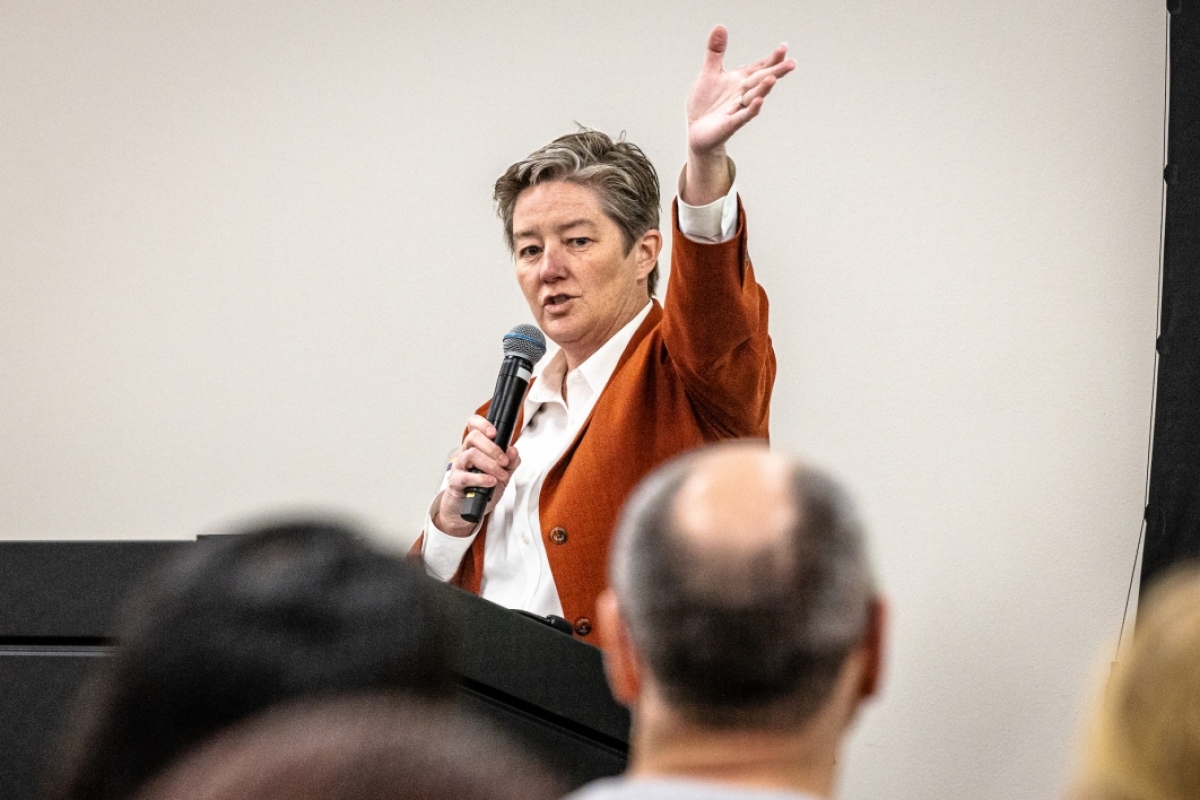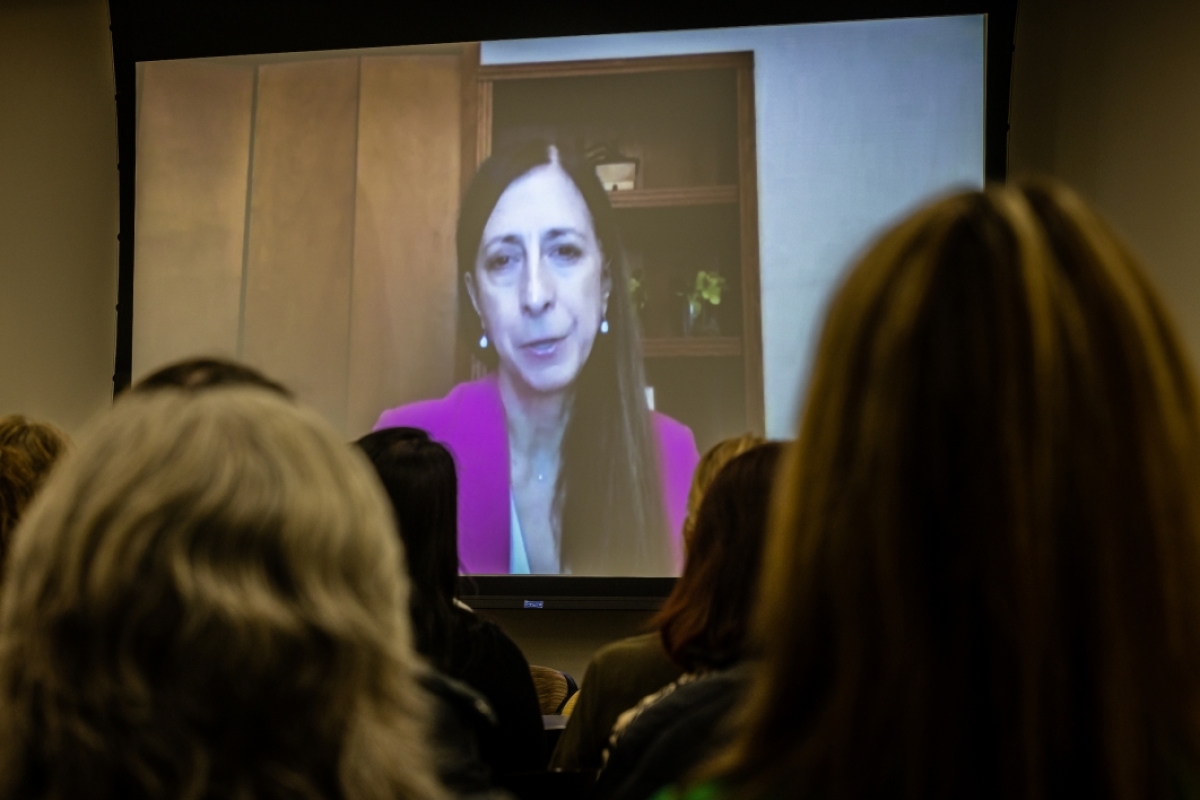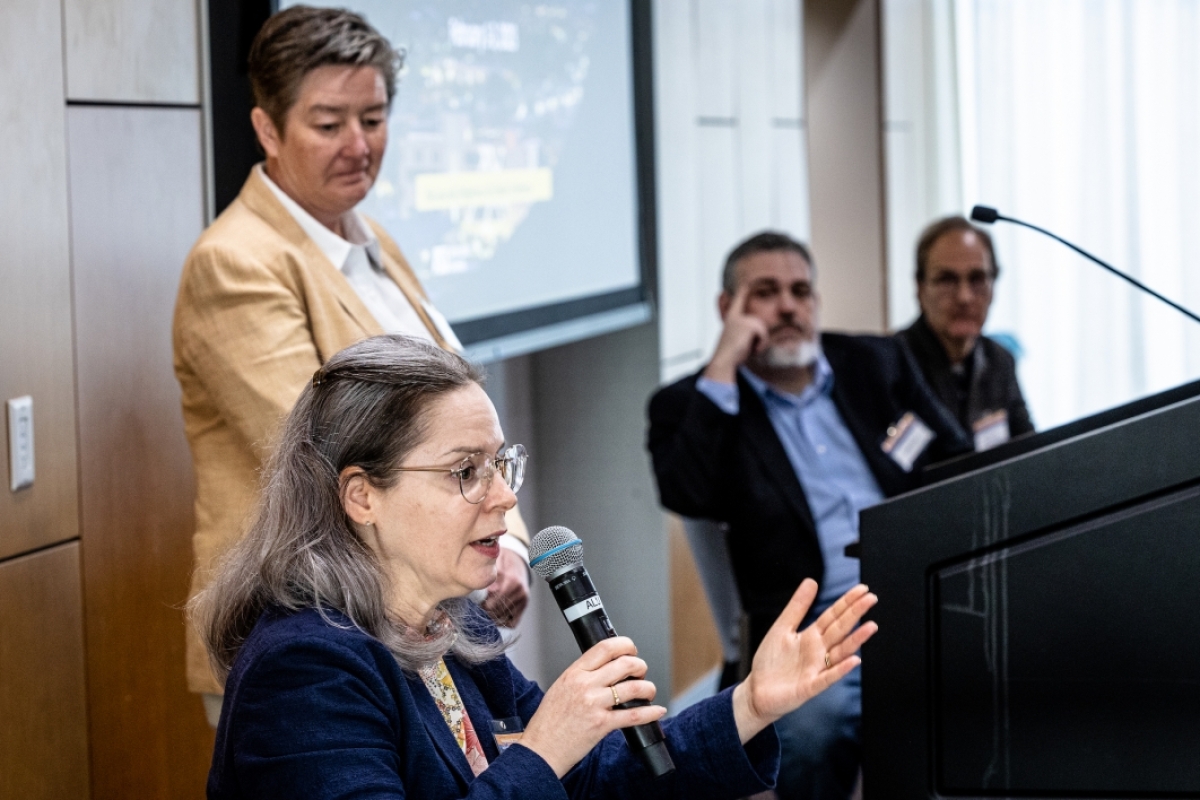Arizona State University is a place where big thinkers convene and important conversations take place. That tradition continued this week with a three-day international conference at the Tempe campus.
ASU’s T. Denny Sanford School of Social and Family Dynamics co-sponsoredOther conference sponsors include the American Bar Association, Center of Indian and Minority Health, National Science Foundation, National Association of Legal Services, Charles Stewart Mott Foundation, Open Society Foundations and the University of Minnesota Medical School. the “Indigenous Access to Justice Global Conference,” held Feb. 1–3 in the Memorial Union, gathering experts around the world and giving them an opportunity to connect and empower each other.
“As far as we know, this is the first-ever Indigenous Access to Justice Global Conference. So if that’s the ride you want to be on, you’re on the correct ride and we’re delighted that you’re here,” said Rebecca Sandefur, conference co-organizer and professor and director of ASU’s School of Social and Family Dynamics, during her opening remarks on Feb. 1. “(This conference) is about empowering people and communities to connect with the law and their rights so they can flourish and thrive. In order for that to happen, you actually have to bring together different kinds of knowledge and different kinds of deep experience.”
The conference offered just that: keynote speakers, plenaries and panel discussions that examined a variety of topics on Indigenous law, language, rights and justice. Attendees included academic leaders, researchers, authors, attorneys, judges, justices, and nonprofit and foundation directors from six different continents, including individuals representing 22 Indigenous groups. Their goals, however, were the same.
“To share opportunities and challenges for Indigenous groups from around the world,” Sandefur said.
Not present, but accounted for
Keynote speaker Mary Smith could not attend the Feb. 1 opening day conference as it conflicted with an American Bar Association event in Chicago. However, her presence in Arizona, courtesy of Zoom, was felt by approximately 100 people in attendance and those who watched online.
Smith, who is the first Native American president-elect of the American Bar Association (ABA) told those assembled that the ABA’s history has not always been linear or pure but is headed in the right direction.
“It has been fraught with past racial and gender discrimination,” said Smith, who will take over the world’s largest voluntary association of lawyers, judges and other legal professionals in August 2023. “Today it is a reflection of a transforming legal profession and as an association with very different values and goals. I am here today as the ABA’s first Native American woman president-elect.”
She said despite past discrimination and exclusionary rules and practices against Native Americans, they are resilient and possess and exercise their own inherent sovereignty.
“Tribal courts fill critically important and practical roles in tribal communities and correspondingly ensure that Indigenous peoples have human rights,” said Smith, who is an enrolled member of the Cherokee Nation. “Today the ABA actively incorporates support for Indigenous-specific policies. The ABA has also endorsed the United Nations declaration on the rights of Indigenous peoples, recognizing international norms for Indigenous rights to self-determination.”
Smith said Native Americans have made big strides the last few years, including five federal court judges, a secretary of the interior, director of the National Park Service and a handful of members in Congress.
“These are all causes to celebrate Natives in leadership whether in tribal, state, federal leadership or on corporate boards and nonprofit leadership,” Smith said. “Conversely, Native peoples are uplifted through inclusion.”
Opening plenary: 'A Conversation on Indigeneity and Access to Justice'
If the word Indigeneity sounds hard to define, it took three different panelists to distill and define it for participants.
While the common understanding of the word usually means the fact of originating or occurring naturally in a particular place, it meant different things to panelists.
For human rights attorney Delme Cupido, the word sparks heated debate in his country.
“In the African context, it’s what we don’t mean when we speak about our community because there’s obviously a sense in which all Africans are Indigenous to the African community, right?” said Cupido, southern hub director of Natural Justice, an organization that specializes in human rights and environmental law in Africa. “So sometimes when people speak about Indigeneity, they can be quite contentious.”
Cupido said this type of discrimination leads to marginalization, justice discrimination and lack of recognition and access, especially among the Sān and Khoi people.
“The laws aren’t on the books but if you’re applying for a job, questions about your texture are still asked, even if you apply for a job in government,” Cupido said. “If you try and open a bank account, they’ll say no for statistical reasons.”
In Oklahoma, the word is connected to family and land, according to Stephanie Hudson, a member of the Kiowa tribe.
“As an Indigenous person, we are often asked, ‘Should we call you Native American or should I call you an American Indian?” said Hudson, executive director of Oklahoma Indian Legal Services. “My answer is always, ‘You don’t call them either. Call them what they are, they’re tribal. Which tribe are they?’ Being Indigenous to me means who’s your family and where is your land?”
In the Canadian context, Indigenous tribes determine who their people are, said panelist Karen Drake.
“What makes us Indigenous according to my community, and other Indigenous communities in Canada, is not our DNA," said Drake, an associate dean and professor at the Osgoode Hall Law School in Toronto. "It’s not our genetics. Instead, it’s the fact that we are nations or peoples.”
Indigenous health justice
Indigenous communities can suffer from a variety of health disparities, including lack of proper funding and access to health services.
But the system is slowly showing signs of improvement, according to a three-member panel of health and legal service advocates.
Moderated by Nikole Nelson of Alaska Legal Services Corporation, the Feb. 2 panel included Tamee Livermont, from the University of Minnesota Medical School; Robert Onders, from the Maniilaq Health Center and Cody Nelson, from Anishinabe Legal Services.
All three agreed that tribal self-determination and flexibility is tied to better health and legal outcomes. That has already happened in Alaska, according to Onders.
“In Alaska, tribes run eight hospitals and over 200 clinics. The average population of a village is about 250 people, many of them geographically isolated. When we look at physicians, you’re not going to put one in a community of about 250 people," said Onders, who also has a Juris Doctor and a master’s in public administration. “So what Alaska has come up with is a community-based solution to have a health care provider in all those villages. Alaskan tribes have taken a system that had been there for thousands of years and kind of Westernized to provide the same level of health care access that they’ve always had.”
It's not quite that way in the Great Plains, said Livermont, who went to medical school because she was tired of seeing her relatives not have access to proper health care.
“I have heard stories from my relatives about how family members who went to Indian Health Services died when they went home because they were misdiagnosed,” said Livermont, who aims to utilize policy and her clinical degree to empower tribal nations and improve health outcomes. “When I discovered policy as an undergrad, I found the ability to make systemic change at the federal and state levels … health care needs to reflect the needs of the community, not reflect the opinions or views of the federal leaders working in our health systems.”
Nelson said he has seen a big shift in the court system since he graduated from law school in 2006.
“I would say 90% of our cases were in state court when I started,” said Nelson, whose firm offers free legal assistance to low-income Native Americans residing in northern Minnesota to ensure they receive culturally appropriate medical and mental health treatment. “Now flash forward, and I would say that 90 to 95% of our cases are in tribal court. Tribal sovereignty and self-determination have taken those cases from the state courts, grown their own codes, and the number of judges, clerks and attorneys within the system. It’s just been an amazing transformation in our community.”
Onders said he’d like to see this transformation also take place in the medical profession.
“As a physician, it’s relatively easy to train someone to have the technical skills to become a health care provider,” Onders said. “It’s very hard to take someone and train them to be culturally appropriate and connected to their community. It’s much easier to train a tribal member and give them all the health care tools.”
Top photo: Panelists Delme Cupido (left), director of the Southern Africa Hub of Natural Justice; Stephanie Hudson, executive director of the Oklahoma Indian Legal Services; and Karen Drake, associate dean and associate professor at Toronto-based Osgoode Hall Law School are part of a panel titled “Conversation on Indigeneity and Access to Justice” during the Indigenous Access to Civil Justice Conference on Feb. 1, held at the Memorial Union on the Tempe campus. Photo by Charlie Leight/ASU News
More Health and medicine

What makes human culture unique?
Why is human culture — the shared body of knowledge passed down across generations — so much more powerful than animal cultures?“What’s special about our species?” is a question scientists have…

ASU honors students work on HPV research as part of Barrett College's largest-ever group thesis
Not every undergraduate student comes across the opportunity to do research as part of a team. Even fewer have had the chance to join a team of 86 students doing multidisciplinary research with real-…

College of Health Solutions alumnus named Military Medic of the Year
By Keri Hensley and Kimberly LinnJonathan Lu has looked out for the health of his fellow military service members his whole career, starting with his role as a combat medic in the U.S. Army.Driven by…




